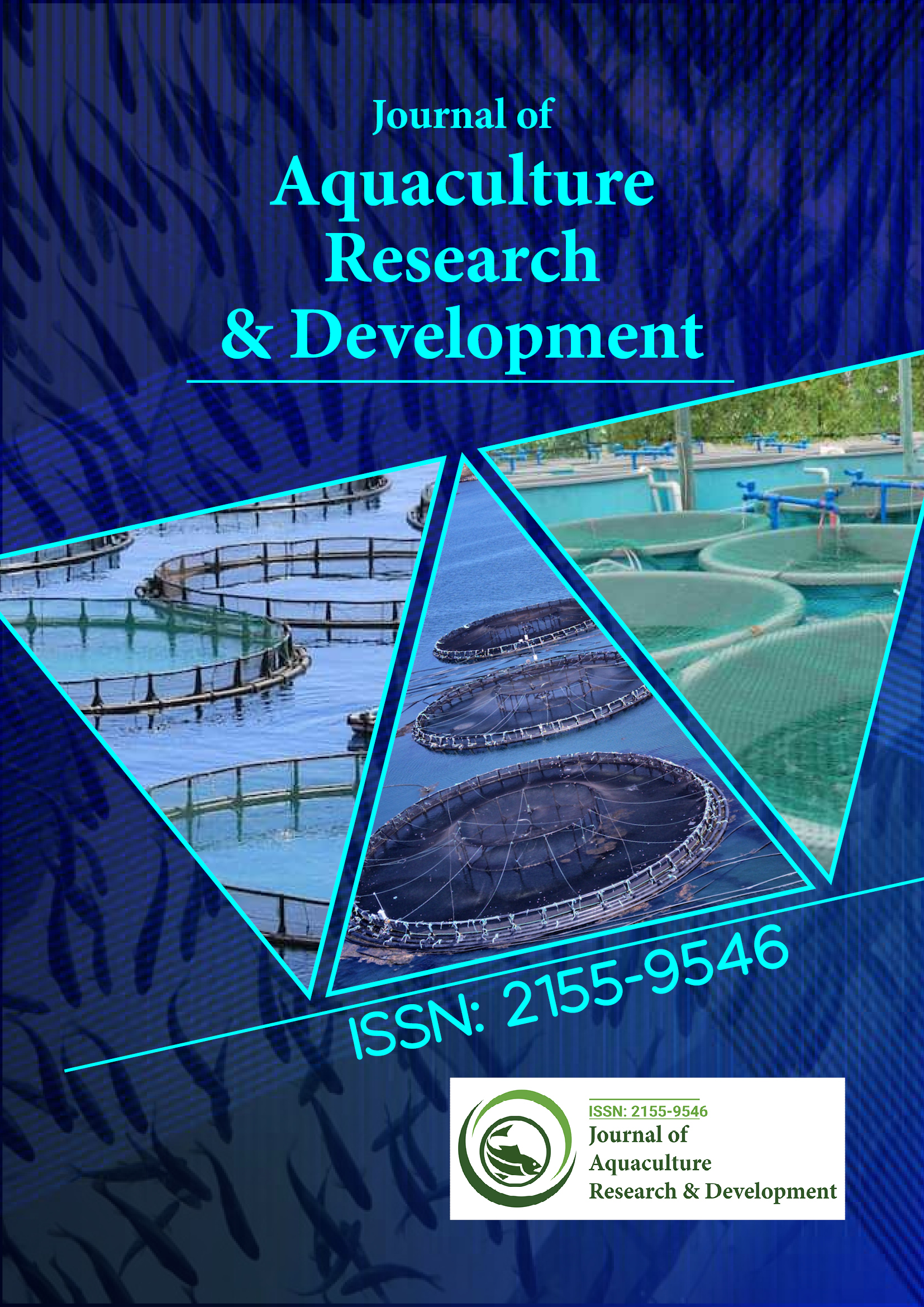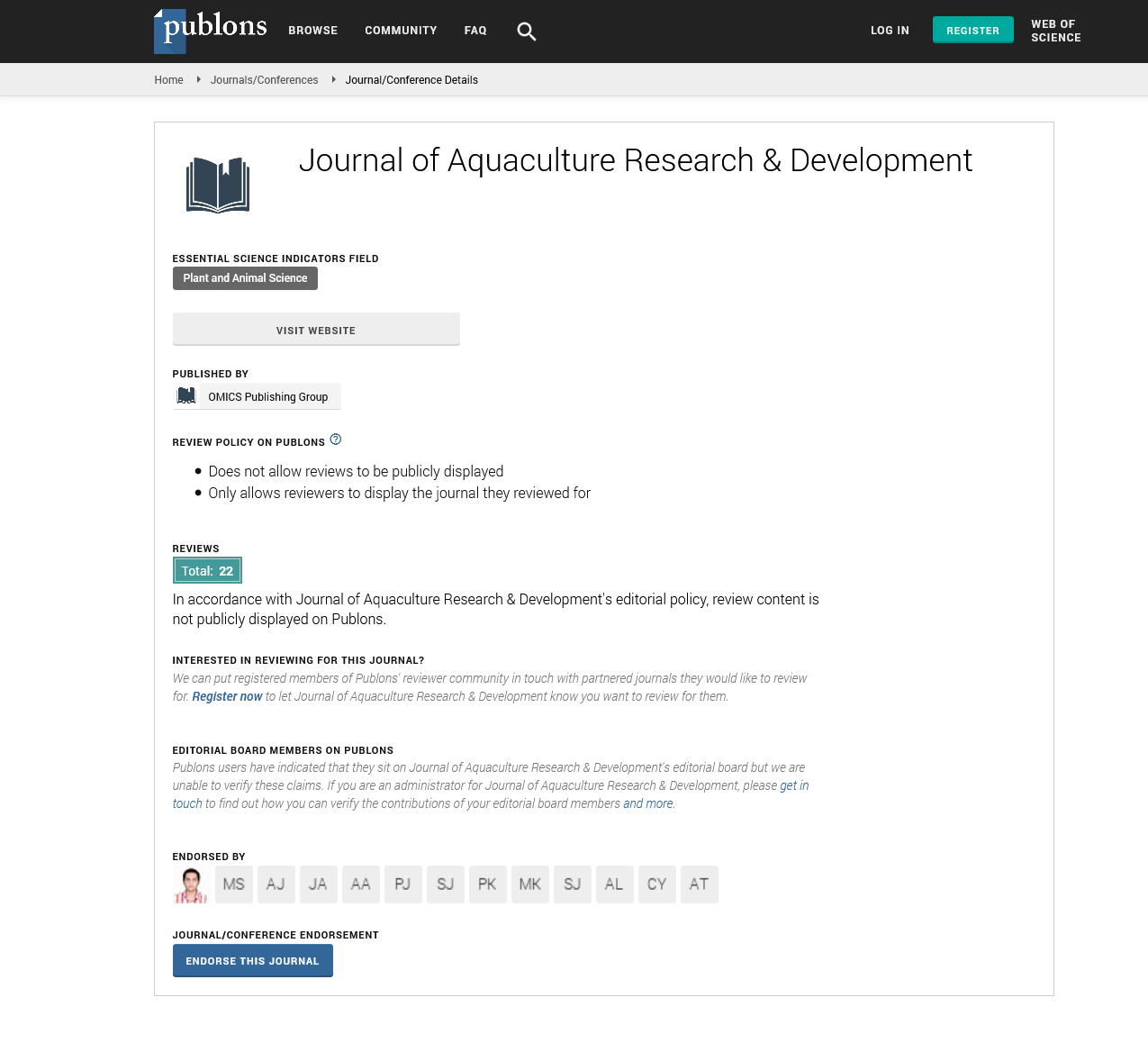Indexed In
- Online Access to Research in the Environment (OARE)
- Open J Gate
- Genamics JournalSeek
- JournalTOCs
- Scimago
- Ulrich's Periodicals Directory
- Access to Global Online Research in Agriculture (AGORA)
- Electronic Journals Library
- Centre for Agriculture and Biosciences International (CABI)
- RefSeek
- Directory of Research Journal Indexing (DRJI)
- Hamdard University
- EBSCO A-Z
- OCLC- WorldCat
- Scholarsteer
- SWB online catalog
- Virtual Library of Biology (vifabio)
- Publons
- MIAR
- University Grants Commission
- Euro Pub
- Google Scholar
Useful Links
Share This Page
Journal Flyer

Open Access Journals
- Agri and Aquaculture
- Biochemistry
- Bioinformatics & Systems Biology
- Business & Management
- Chemistry
- Clinical Sciences
- Engineering
- Food & Nutrition
- General Science
- Genetics & Molecular Biology
- Immunology & Microbiology
- Medical Sciences
- Neuroscience & Psychology
- Nursing & Health Care
- Pharmaceutical Sciences
Perspective - (2025) Volume 16, Issue 6
Changes in Blue Carbon Retention in Sediments Driven by Oyster Farming Practices
Michel Patten*Received: 26-May-2025, Manuscript No. JARD-25-29776; Editor assigned: 28-May-2025, Pre QC No. JARD-25-29776 (PQ); Reviewed: 11-Jun-2025, QC No. JARD-25-29776; Revised: 18-Jun-2025, Manuscript No. JARD-25-29776 (R); Published: 25-Jun-2025, DOI: 10.35248/2155-9546.25.16.1003
Abstract
Description
Aquaculture has expanded across the globe as a key strategy to ensure a sustainable seafood supply, strengthen coastal economies and relieve the mounting pressure on overexploited marine stocks. Within aquaculture systems, oyster farming has emerged as one of the most widely practiced forms, particularly in estuarine and nearshore environments. Beyond providing food and livelihoods, oyster cultivation interacts with ecological processes at multiple levels. It influences nutrient cycling, carbon storage and the functioning of microbial communities that regulate these processes. This ecological interplay has recently gained greater attention because of the growing recognition of the role that coastal ecosystems play in climate regulation through the storage of “blue carbon.”
Blue carbon in coastal sediments
The concept of blue carbon refers to the carbon captured and stored in coastal ecosystems such as mangroves, salt marshes, seagrass meadows and in the sediments that underlie aquaculture systems. Coastal sediments function simultaneously as carbon sinks and carbon sources, depending on how organic matter is processed within them. Once organic material is deposited in sediments, it may follow one of three possible pathways: it can be buried for long periods, it can be decomposed and released as carbon dioxide or methane, or it can be transformed into chemically resistant forms that decompose only very slowly.
Microbial activity lies at the heart of these outcomes, since microbes regulate decomposition, fermentation and methanogenesis. The accumulation of blue carbon occurs when organic inputs exceed microbial decomposition, creating a net storage of carbon. However, this delicate balance is controlled by environmental conditions such as oxygen availability, nutrient loads and hydrodynamic flows. Oyster farming, especially under intensive conditions, can alter these parameters by enriching sediments with organic matter, changing redox conditions and shaping microbial niches that determine whether carbon is stored or released.
Oyster farming and sediment modification
Oysters are suspension feeders that filter large amounts of water to capture plankton and particulate matter. In doing so, they produce feces and pseudofeces that are deposited onto the sediment surface as biodeposits. These biodeposits are highly enriched in organic matter and nutrients, which under natural conditions are assimilated into sedimentary and microbial processes. However, in intensive oyster farming systems where stocking densities are high, the accumulation of biodeposits often exceeds the natural capacity of sediments to process them.
The consequence of such enrichment is a marked reduction in oxygen availability near the sediment-water interface, driven by elevated microbial demand for oxygen. Oxygen depletion shifts microbial metabolism toward anaerobic pathways, which include sulfate reduction and methanogenesis. These processes release carbon back into the water column in the form of carbon dioxide and methane, rather than locking it into long-term sediment storage. Thus, oyster farming modifies sediment conditions in ways that influence both microbial processes and carbon cycling outcomes.
Changes in oyster farm sediments
The fate of organic carbon within sediments beneath oyster farms is largely determined by microbial communities. Intensive farming exerts strong pressures on microbial composition and functioning. High organic matter input favors microbes adapted to nutrient-rich conditions. These copiotrophic species grow rapidly and decompose labile carbon quickly, reducing the chances that this material will be buried long-term. In contrast, oligotrophic microbes, which thrive in nutrient-poor environments and contribute to slower, more efficient decomposition pathways, may decline under intensive aquaculture.
Management strategies and future research
Recognizing the central role of microbes in determining carbon outcomes, management strategies must focus on maintaining conditions that promote carbon burial while limiting decomposition and greenhouse gas release. Adjusting stocking densities to avoid overwhelming sediment capacity is one important measure. Integrated multi-trophic aquaculture, in which oysters are farmed alongside seaweeds or other species that absorb excess nutrients, can help balance ecological impacts. Site selection is equally critical, as hydrodynamic conditions influence how biodeposits are dispersed and assimilated.
Oyster farming stands at the intersection of food security, economic sustainability and environmental change. While it provides vital resources and supports livelihoods, its influence on sediments and microbial processes has far-reaching consequences for blue carbon storage. Intensive farming alters microbial communities, enhances anaerobic metabolism and reduces the efficiency of long-term carbon burial. As a result, sediments beneath oyster farms may shift from functioning primarily as carbon sinks to becoming sources of carbon emissions.
Citation: Patten M (2025). Changes in Blue Carbon Retention in Sediments Driven by Oyster Farming Practices. J Aquac Res Dev. 16:1003.
Copyright: © 2025 Patten M. This is an open-access article distributed under the terms of the Creative Commons Attribution License, which permits unrestricted use, distribution, and reproduction in any medium, provided the original author and source are credited.

